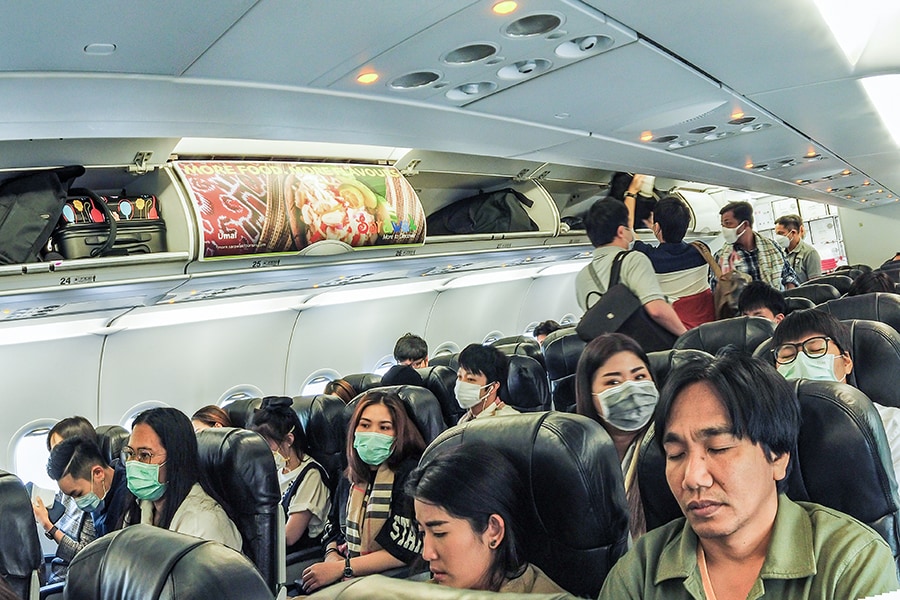
One 18-hour flight, four coronavirus infections
Using seat maps and genetic analysis, a new study determined that one passenger initiated a chain of infection that spread to four others during a flight between Dubai and Auckland in September.
 Image: Shutterstock
Image: Shutterstock
The millions of airline passengers who traveled over the holidays experienced firsthand the unsettling uncertainties that come with flying during a pandemic. The anxious glances. The awkward semi-distancing. The haphazard mask etiquette, and the absence of regular service.
In an effort to reassure, the airlines have updated and adjusted their requirements for travelers, with patchwork results. Some airlines work to maintain social distance, both at the gate and at boarding; others are less vigilant. Mask-wearing is dependent on passenger compliance, and not predictable; nor, increasingly, is flight capacity, which can range from 20% to nearly full.
Given the variables, infectious disease specialists have had a hard time determining the risks of flying. But a study published on Wednesday provides some clarity.
After an 18-hour flight from Dubai landed in Auckland, New Zealand, in September, local health authorities discovered evidence of an outbreak that most likely occurred during the trip. Using seat maps and genetic analysis, the new study determined that one passenger initiated a chain of infection that spread to four others en route.
Previous research on apparent in-flight outbreaks focused on flights that occurred last spring, when few travelers wore masks, planes were running near capacity and the value of preventive measures was not broadly understood. The new report, of a largely empty flight in the fall, details what can happen even when airlines and passengers are aware and more cautious about the risks.
©2019 New York Times News Service




